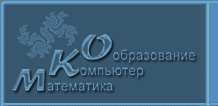|
|
Архив публикацийТезисыXXIX-ая конференцияТочный аналитический расчет нестационарного коэффициента скорости в теории гиперболической диффузииФедеральный исследовательский центр химической физики им. Н.Н. Семёнова РАН, ул. Косыгина 4, 119991,Москва, РФ 1 стр. (принято к публикации)It is common knowledge that hyperbolic diffusion initial boundary-value problems are more complicated than corresponding classical ones. In this connection here we considered different mathematical aspects of the diffusion hyperbolic problems in full details. Using approach, based on the diffusion analog of the known Cattaneo-Vernotte differential model, we find the exact analytical solution to the corresponding time-dependent linear hyperbolic Cauchy-Dirichlet problem, describing, particularly, diffusion-controlled reactions under Smoluchowski's boundary condition on a perfectly absorbing spherical sink. By means of this solution we resolve known paradoxes of the classical diffusion theory and extend exact analytical calculations for the classical Smoluchowski rate coefficient to the case of relevant hyperbolic diffusion theory, which includes inertial effects, occurring in the host media with finite relaxation times . Thus, we obtained exact formula, for the reaction rate coefficient
Here is the first kind modified Bessel function of order zero; stands for the Smoluchowski steady state rate constant, where and are reaction radius and diffusion coefficient, respectively. Obtained formula (1) seems to be of great significance in order to bridging a known gap between analytically estimated rate coefficient on the one hand, and molecular dynamics simulations together with experimentally observed results for the short times regime on the other hand. We also managed to show that well-known Rice's formula published in the famous book [1], commonly recognized earlier as an exact reaction rate coefficient for the case of hyperbolic diffusion, turned out to be only its uniform upper bound. Moreover, we proved that relevant solution does not obey the correct initial condition for the local diffusive flux. Besides, we not only pointed out Rice's formula mathematical discrepancy, but we also suggested an explanation concerning possible reasons for it. We believe, that the potentialities of various applications of the hyperbolic diffusion model in chemical and biological problems (e.g., to describe quantitatively ultrafast elementary photochemical processes in liquid solution) have far not been yet exhausted. That is why we hope that our study will encourage the ulterior beneficial use of the hyperbolic diffusion model in general theory of diffusion transfer, while looking more closely at subtle mathematical pitfalls to be avoided.
References 1. Rice S.A., Diffusion-limited reactions, Amsterdam: Elsevier, 1985, 400 p. |

